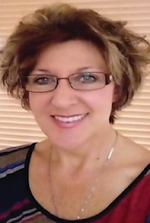Did you know that many of your patients may be too embarrassed to admit that they don’t know how to brush properly? They may have received entertaining oral health instructions as schoolchildren, but since then, no one has demonstrated the proper way to brush to them. They’re often embarrassed to ask you how, thinking this is something they should know how to do.
But do they?
As a long-time dental hygienist, I admit I’m guilty of glossing over the oral hygiene instructions during an appointment. I typically ask patients if they brush morning and night with a soft bristle toothbrush, use a fluoridated toothpaste, and whether they’re flossing. Unfortunately, I often do this so automatically that I don’t individualize instruction based on patients’ needs.
Now I understand why patients sometimes don’t respond well to treatment. In many cases, they’re as confused as me, because they have been brushing twice a day, just not effectively.
In dental hygiene school, we were told to hand patients a mirror and ask them to demonstrate how they brush and floss. This was awkward holding the mirror and instructing them at the same time. I can only imagine patients felt silly and a bit self-conscious. They may have thought, “This is embarrassing,” or “I think this is right but I’m not sure.”
This exercise often put patients on the defensive, and they would sometimes apologize for not doing it correctly. So, I decided to take a more positive and less awkward approach.
Now I don’t ask if they’re brushing because I can usually tell. I don’t ask if they’re flossing because I can usually tell that, also. What I’ve found is that I need to be more specific. If they don’t floss, I ask, “Is it because you need a refresher on how to floss, or is it because you find it unpleasant?” If it’s technique, I show them. If they find it unpleasant, I discuss other ways to clean between their teeth.
You might also be interested in reading: 5 communication cues for success with dental patients
How to solve the brushing problem
But brushing may be the problem. While in some cases not flossing may be acceptable, and good alternatives are available, brushing is a more necessary norm. Most people understand that brushing is important and should be done in the morning and evening. So, why is there so much plaque and periodontal disease among patients?
I often find they’re interested in the research that explains how long to brush and what works best to remove tenacious plaque. I tell them that plaque is normal and that even after they brush, it can form again in a matter of minutes or hours. I show them that after a time, the plaque hardens and becomes impossible to remove with a toothbrush and floss. Therefore, prophylaxis appointments every six months is routine, but for some patients, more frequent visits may be warranted.
I show them what the Bass toothbrushing technique looks like on a typodont and in their mouth. The ongoing research has found this to be more effective than circles or scrubbing. I never make patients feel as though they brush incorrectly, only that we now believe there are more efficient ways to remove plaque.
As dental care providers, we’re on the forefront of research. Patients often only know what they see advertised. (Do they really need that much toothpaste on their brushes?) So, they learn from us. If we don’t take the time to show them proper brushing and flossing techniques, how can we expect gingivitis to improve and pseudo pockets to reduce in depth?
Remember to never talk down to patients while educating them. While we may have the upper hand when it comes to dental knowledge, patients have expertise in other areas and deserve respect. I find that if I talk down them, they tune me out. And I try not to send patients home with adjuncts without showing them how to assemble and use the items.
Ultimately, we need to be aware of our patients’ needs. Never let them feel embarrassed if they need an updated lesson on how to brush or how to use a new oral health tool. They’ll feel more informed and secure, and you’ll see better results at each appointment.







